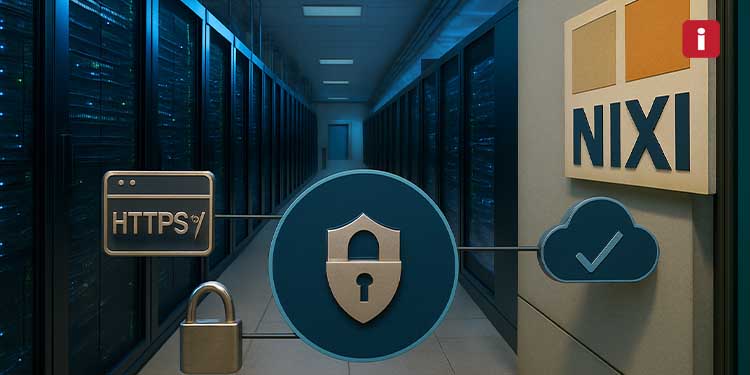In 2025, India is taking a major leap in digital transformation, not just in terms of user growth but also infrastructure integrity and cybersecurity. Leading this shift is the National Internet Exchange of India (NIXI), a silent yet powerful institution shaping the backbone of Indian internet services. With the rise of cyber threats, dependency on global internet protocols, and the increasing demand for indigenous digital frameworks, NIXI has now evolved beyond domain registration. This year marks a strategic shift for the exchange from routing internet traffic to actively securing digital identities and fortifying national web resilience.
NIXI’s Evolution | More Than Just an Internet Exchange
Initially set up in 2003 to manage and promote India’s top-level country domain “.in,” NIXI has traditionally handled internet traffic routing and domain registry services. But the rising importance of data sovereignty and cybersecurity concerns has propelled the agency into a broader role. Today, NIXI is working on building a more secure, independent internet for India — one that reduces reliance on foreign infrastructure and ensures the security of Indian users.
India’s First Indigenous HTTPS Root Initiative
One of the most ambitious projects underway is the development of India’s very own HTTPS root, a move aimed at ensuring a secure and sovereign digital communication framework. HTTPS roots are typically managed by global certificate authorities, most of which are headquartered outside India. By setting up an indigenous HTTPS root, NIXI aims to localize digital trust mechanisms and limit the control of foreign entities over India’s internet traffic.
The benefit? Faster authentication, increased trust in Indian digital services, and tighter control over critical infrastructure. This is a foundational step toward creating an internet ecosystem where Indian institutions and users are not dependent on foreign certificate providers.
The ‘.bank.in’ Domain Shift and RBI Compliance
Another significant initiative involves NIXI’s collaboration with the Reserve Bank of India (RBI) to transition Indian banking institutions to ‘.bank.in’ domains. This directive is part of a broader push for secure digital communication in financial services.
Why ‘.bank.in’? Because it offers verified, KYC-compliant domain usage. Only authorized and regulated financial institutions can register under it, reducing risks of phishing attacks, fraud, and spoofing. NIXI is facilitating this migration by offering technical and policy support to banks, credit unions, and NBFCs, ensuring that the sensitive financial ecosystem of India remains cyber-resilient.
Internet Resilience Policy | A Future-Ready Framework
In a time when cyberattacks and internet disruptions are becoming more frequent, NIXI is developing an Internet Resilience Policy aimed at ensuring uninterrupted digital services. This includes:
- Geographic redundancy in DNS servers
- Localized routing architecture
- Failover mechanisms in case of submarine cable cuts or outages
This effort is particularly vital for critical sectors such as healthcare, fintech, education, and e-governance, which now depend heavily on stable internet access.
Securing the Web: KYC for ‘.in’ Domain Registrations
To strengthen transparency in domain ownership and prevent misuse, NIXI has mandated Know Your Customer (KYC) verification for all new and existing ‘.in’ domain registrations. This includes Aadhaar, PAN, or business registration verification.
This move is expected to:
- Discourage fraudulent websites and cybercriminals
- Improve user trust in Indian domains
- Enhance national security in the digital space
KYC for domain registration is a globally rare initiative, and NIXI’s implementation of it positions India as a leader in domain transparency and accountability.
Boosting ‘.IN’ Domains: A Push for Digital Nationalism
NIXI is also actively promoting the adoption of ‘.in’ domains among startups, MSMEs, and government platforms. The goal is to reach 5 million ‘.in’ registrations — up from around 3 million currently.
This push supports the Make in India and Digital India missions by encouraging the use of Indian digital identities. It also helps small businesses stand out online with a national brand presence and local SEO advantage.
Additionally, NIXI supports regional internet expansion through native language domain names, such as ‘.bharat’, fostering inclusivity in the digital landscape.
Collaboration with Cybersecurity Agencies
To ensure the success of these reforms, NIXI is working closely with agencies like CERT-In (Computer Emergency Response Team-India), MeitY, and the Ministry of Home Affairs. These collaborations help identify threats, automate response mechanisms, and secure DNS infrastructure through advanced monitoring and AI-based anomaly detection systems.
Technology Driving NIXI’s 2025 Infrastructure
Modernization is at the core of NIXI’s roadmap. The agency is upgrading its systems using cloud-native infrastructure, edge computing for faster DNS resolution, and blockchain-based auditing tools to validate domain ownership records. AI and ML models are being tested to predict suspicious domain behaviors, enabling preemptive blocking of malicious activities.
Conclusion: A Safer, Smarter, Self-Reliant Internet for India
2025 is the year India begins asserting full control over its digital destiny. Through initiatives like the HTTPS root, secure domain registration, internet resilience policies, and tech modernization, NIXI is not just keeping pace with global internet governance, it’s setting new standards.
In an era where cybersecurity threats loom large and digital independence is vital, NIXI’s strategic pivot is a timely and necessary evolution. The future of the Indian internet is not only about speed and access it’s about sovereignty, security, and sustainability. And NIXI is building the foundation for all three.













































